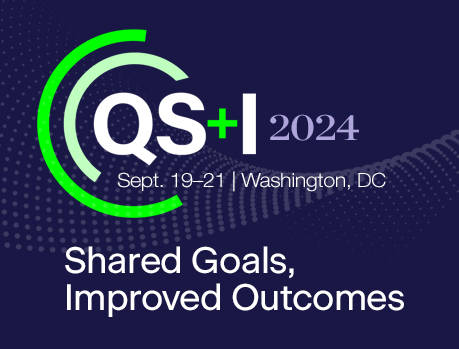AI In Women's Imaging: "From Cells to Pixels"

Categories
March 14, 2023 |
Abiola Femi-Abodunde, MD
This current issue of AI in Brief will explore five advancements of AI in women’s imaging which can be conceptualized as from ‘cells to pixels.’ In addition, we will discuss a novel breast imaging tool with recent FDA clearance and highlight patient’s preconceptions of some of these tools.
We will begin with the Gil Shamai / Amir Livne team’s proposed system for predicting PD-L1 expression from analyzing hematoxylin and eosin (H&E) stained images based on convolutional neural networks.
Next, Dr. Caner Mercan and his research group investigate the role of an AI algorithm for developing fully automated nuclear pleomorphism scoring in breast cancer.
The implementation of AI algorithms systems in Digital Breast Tomosynthesis (DBT), a widely accepted modality for breast screening, will be discussed, including future challenges.
The first ultrasound-based modality at quantifying breast density to receive FDA clearance will be highlighted.
We will conclude by discussing a prospective study by Dr. Filippo Pesapane evaluating women’s perceptions of AI integration in breast cancer screening programs.
A breast pathologist companion
https://www.nature.com/articles/s41467-022-34275-9
Programmed Death Ligand-1 or PD-L1 is an immune checkpoint inhibitor that has been an important immunotherapy in several cancers, and recently in breast cancer –specifically, in triple-negative breast cancers (TNBC). The Food and Drug Administration (FDA) granted approval for a monoclonal antibody drug targeting PD-L1 to be used in combination with chemotherapy in a selective group of patients with TNBC.
The Shamai/Livne research group analyzed clinicopathological data if 5596 patients from two independent Canadian patient cohort groups. These patients had newly diagnosed invasive breast cancer with tumor specimens stained for PD-L1. An expert pathologist was involved in the annotation for PD-L1 status of their entire dataset. Using a convolutional network, they achieved high performance at predicting PD-L1 expression with high accuracy in a cross-validation set and a test-set.
https://www.nature.com/articles/s41523-022-00488-w
The assessment of nuclear pleomorphism is a key histopathological diagnosis in breast cancer, which directs clinical management.. As described in the paper, the study by Dr. Mercan et al is the first end-to-end which employs DL in a fully automated nuclear pleomorphism scoring model in breast cancer. Their model yielded considerable agreement between pathologists and algorithms. When employed in real-world clinical scenarios, the nuclear pleomorphism scores predicted by their AI algorithm was equal to that demonstrated by pathologists in most cases.
AI in Digital Breast Tomosynthesis
https://pubs.rsna.org/doi/full/10.1148/rg.220060
In their comprehensive article, Dr. Goldberg and co-authors discuss challenges in developing AI algorithms in Digital Breast Tomosynthesis (DBT) which include the sheer volume of the dataset with greater variability of tissue appearance and limitations of DBT training data set to mention the view. They also describe the available AI applications and potential AI opportunities yet to be fully developed for DBT. They list up to 12 FDA-approved AI products for DBT, with the most recent product (as of January 2022) receiving approval in November 2021. The approved use range from breast density evaluation- an independent risk factor for breast cancer-, to triage of studies on the reading list and finally for the identification of suspicious lesions.
AI assessment of breast cancer risk
https://www.itnonline.com/content/fda-grants-qt-imaging-clearance-calculate-fibroglandular-volume-breast
The first ultrasound-based breast imaging modality for quantifying fibroglandular volume recently received FDA clearance, This tool calculates fibroglandular volume (FGV) and the ratio of FGV to total breast volume (TGV) and the efficacy of breast medications for preventative or therapeutic purposes can be deduced from evaluating those ratios.
Back to Basics- What does the patient want?
https://www.birpublications.org/doi/10.1259/bjr.20220569
The perception of the patient on AI implementation tools is an important consideration that Dr. Filippo Pesapane and his research group investigated. They analyzed 800 questionnaires which were an 11-point item consisting of questions evaluating patients’ knowledge about AI and their associated perceptions. Their respondents were nearly evenly split on their knowledge of AI. There was considerable support among respondents for AI to be used as a second reader. There were respondent factors which the authors associated with better opinions of AI use such as higher education levels and nationality.
Abiola Femi-Abodunde, MD | University of North Carolina, Chapel Hill
AI In Women's Imaging: "From Cells to Pixels"
-

You may also like
Shared Goals, Improved Outcomes: Key Takeaways from the 2024 QSI ConferenceOctober 1, 2024 | Kevin Haines, D.O.As radiologists, we strive to deliver high-quality images for interpretation while maintaining patient safety, and to deliver accurate, concise reports that will inform patient care. We have improved image quality with advances in technology and attention to optimizing protocols. We have made a stronger commitment to patient safety, comfort, and satisfaction with research, communication, and education about contrast and radiation issues. But when it comes to radiology reports, little has changed over the past century.